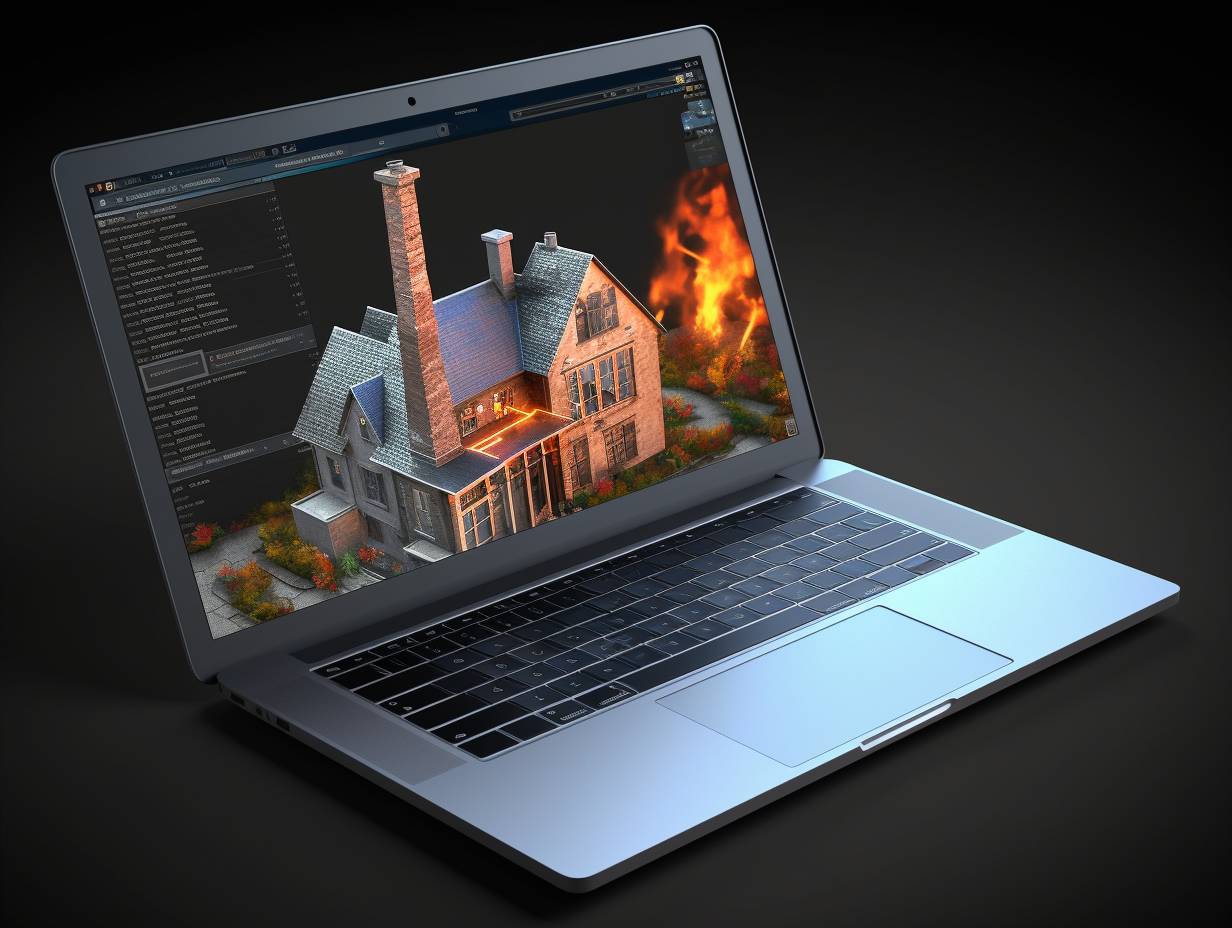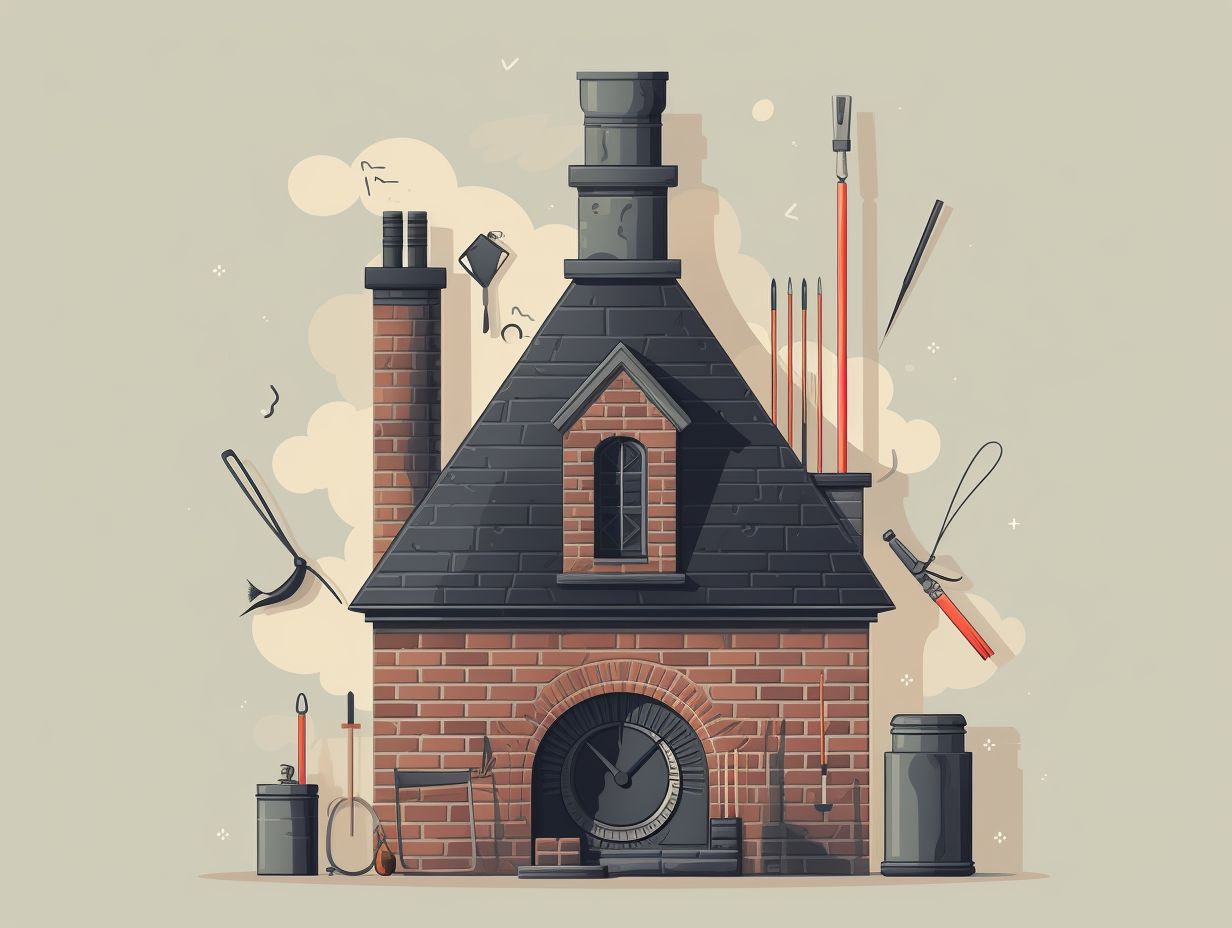
Maintaining Flue Health: Chimney Cleaning Tips
Table Of Contents
- The Importance of Chimney Maintenance
- Signs Your Chimney Needs Cleaning
- DIY Chimney Cleaning Techniques
- Choosing a Professional Chimney Sweep
- The Frequency of Chimney Cleanings
- Removing Creosote Buildup
- Cleaning Chimney Caps and Dampers
- Inspecting and Repairing Chimney Liners
- Chimney Safety Tips
- Frequently Asked Questions
- Conclusion
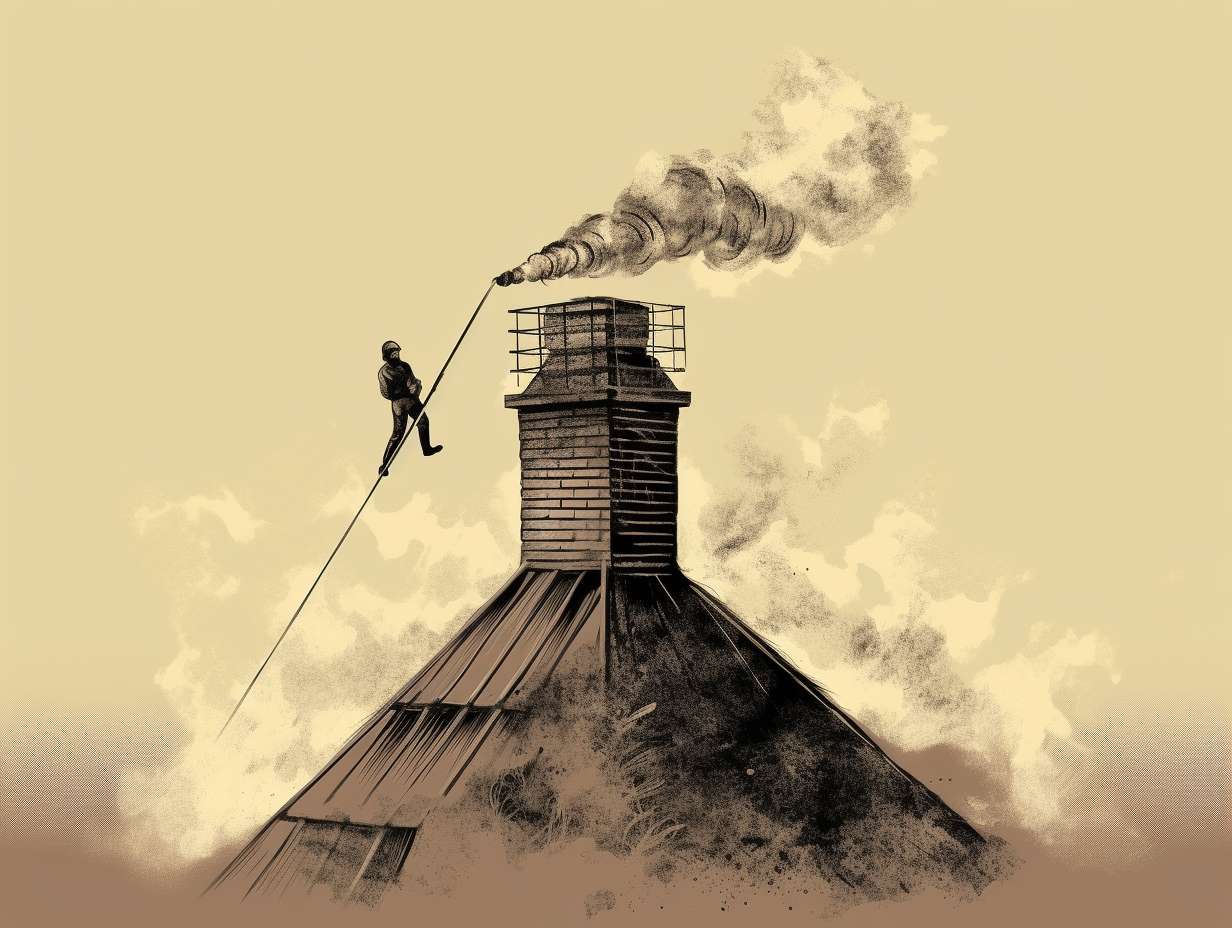
Do you know the saying, “out of sight, out of mind?”This phrase is often used to describe the tendency to forget about something that is not immediately visible. Unfortunately, this can also be true when it comes to maintaining your chimney’s health. Although it may be hidden from view, neglecting your chimney’s maintenance can lead to serious problems down the line.
That’s why it’s important to make sure you keep up with regular chimney cleanings. Not only does this ensure that your flue stays healthy and functioning properly, but it also helps prevent potential hazards like fires or carbon monoxide leaks. In this article, we’ll go over some tips for cleaning your chimney yourself as well as how to choose a professional chimney sweep if you decide to hire one. Plus, we’ll cover some safety tips so you can stay safe while enjoying a warm fire in your home.
The Importance of Chimney Maintenance
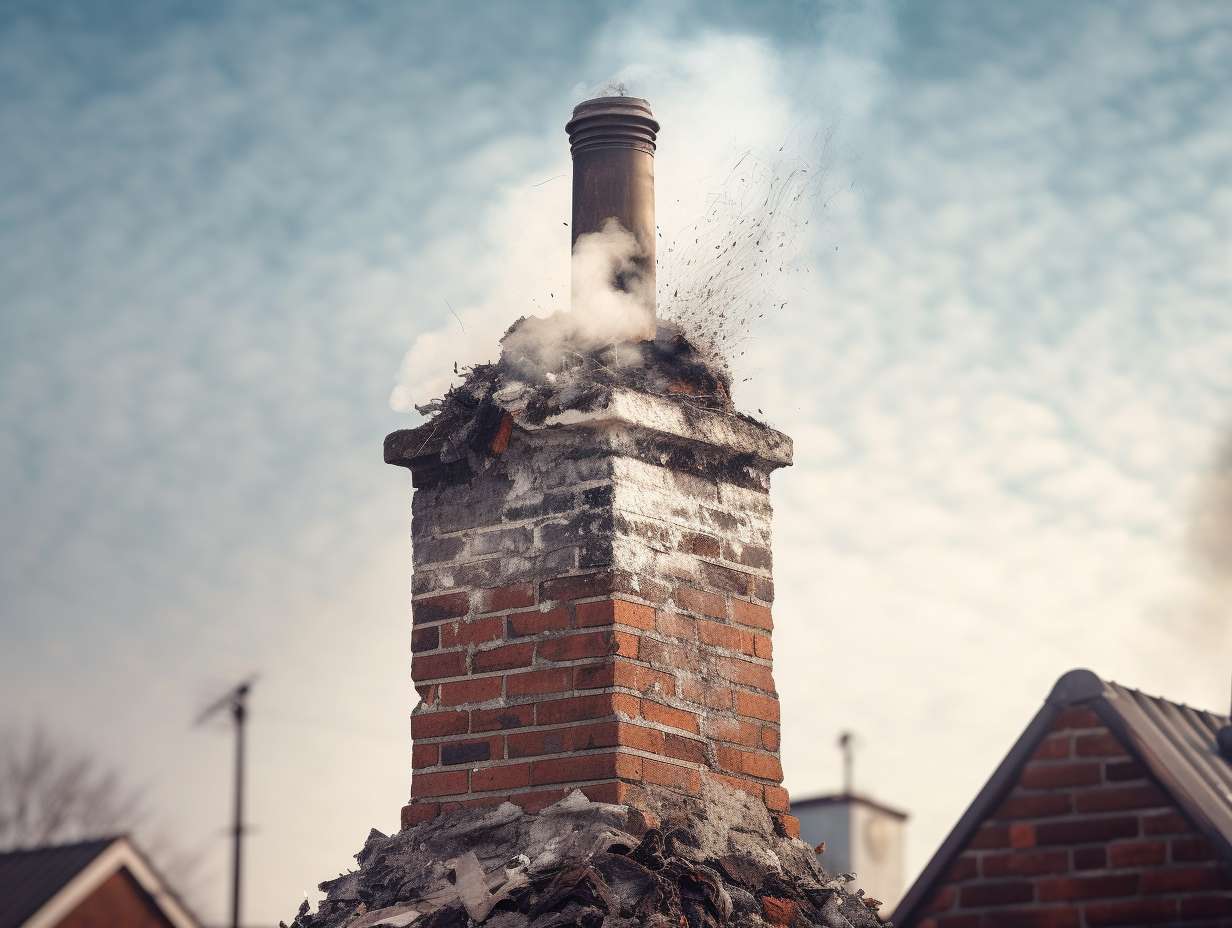
If you want to keep your home and family safe from potential fire hazards, it’s crucial to prioritize regular chimney maintenance. Chimney safety precautions are an important aspect of maintaining the overall health of your flue. It’s essential to have a professional inspect and clean your chimney at least once a year to ensure that there are no blockages or creosote buildup, which can lead to dangerous fires.
Common causes of chimney damage include improper installation, lack of maintenance, and weather-related wear and tear. Neglecting regular cleaning and inspections can cause structural damage to your chimney, leading to expensive repairs or even replacement. By taking preventative measures and scheduling routine maintenance, you’ll avoid potentially hazardous situations while prolonging the life of your chimney. Remember, prevention is always better than cure when it comes to maintaining the health of your flue!
Signs Your Chimney Needs Cleaning
You’ll know it’s time for a chimney cleaning when your home is filled with the overwhelming smell of smoke. This is one of the most obvious signs that your chimney needs attention. However, there are other signs to watch out for as well. For instance, if you notice soot buildup in and around your fireplace or chimney, this could be an indication that it’s time for a good cleaning. Soot buildup can increase the risk of fires and reduce the efficiency of your heating system.
Another sign that your chimney needs cleaning is an increased risk of carbon monoxide poisoning. Carbon monoxide is a colorless, odorless gas that can be deadly in high concentrations. When your chimney is clogged with debris and soot, it can prevent proper ventilation and cause dangerous levels of carbon monoxide to build up in your home. By getting regular cleanings and inspections, you can reduce the risk of carbon monoxide poisoning and ensure that your home stays safe and healthy all year round.
DIY Chimney Cleaning Techniques

Ready to tackle that dirty chimney? Here are some simple techniques you can use to do it yourself. First, gather the necessary cleaning tools for hard to reach areas such as a ladder, flashlight, and goggles. You may also need a drop cloth or tarp to protect your flooring from debris.
Next, consider using chimney brush alternatives such as a wire brush or nylon bristle brush if you don’t have access to a traditional chimney brush. These brushes work just as well and are often more affordable. Once you have your tools ready, climb up on the roof and begin brushing away any soot or creosote buildup from the top down. Be sure to also clean out the flue by using your cleaning tool of choice in an up-and-down motion until all debris is removed. With these DIY techniques, you’ll be able to maintain your flue health without having to hire a professional chimney sweep!
| Cleaning Tools | Description |
|---|---|
| Ladder | Allows access onto roof |
| Flashlight | Helps identify areas needing cleaning |
| Goggles | Protects eyes from falling debris |
| Drop Cloth/Tarp | Protects flooring from debris |
| Wire Brush/Nylon Bristle Brush | Alternatives for traditional chimney brush |
Choosing a Professional Chimney Sweep
When choosing a professional chimney sweep, it’s important to do your research and find a reputable company with experienced technicians. One of the most important factors to consider is certifications. Make sure the chimney sweep you choose is certified by organizations such as the Chimney Safety Institute of America or the National Fireplace Institute. These certifications ensure that the technician has undergone proper training and has the knowledge and skills necessary to properly clean and inspect your chimney.
Another factor to consider when choosing a professional chimney sweep is pricing. While it may be tempting to go for the cheapest option, keep in mind that quality service often comes at a higher price point. Look for companies that offer transparent pricing and are upfront about any additional costs or fees. Ultimately, investing in a reputable and experienced chimney sweep will not only ensure your safety but also save you money in the long run by preventing costly repairs due to neglect or improper cleaning techniques.
The Frequency of Chimney Cleanings
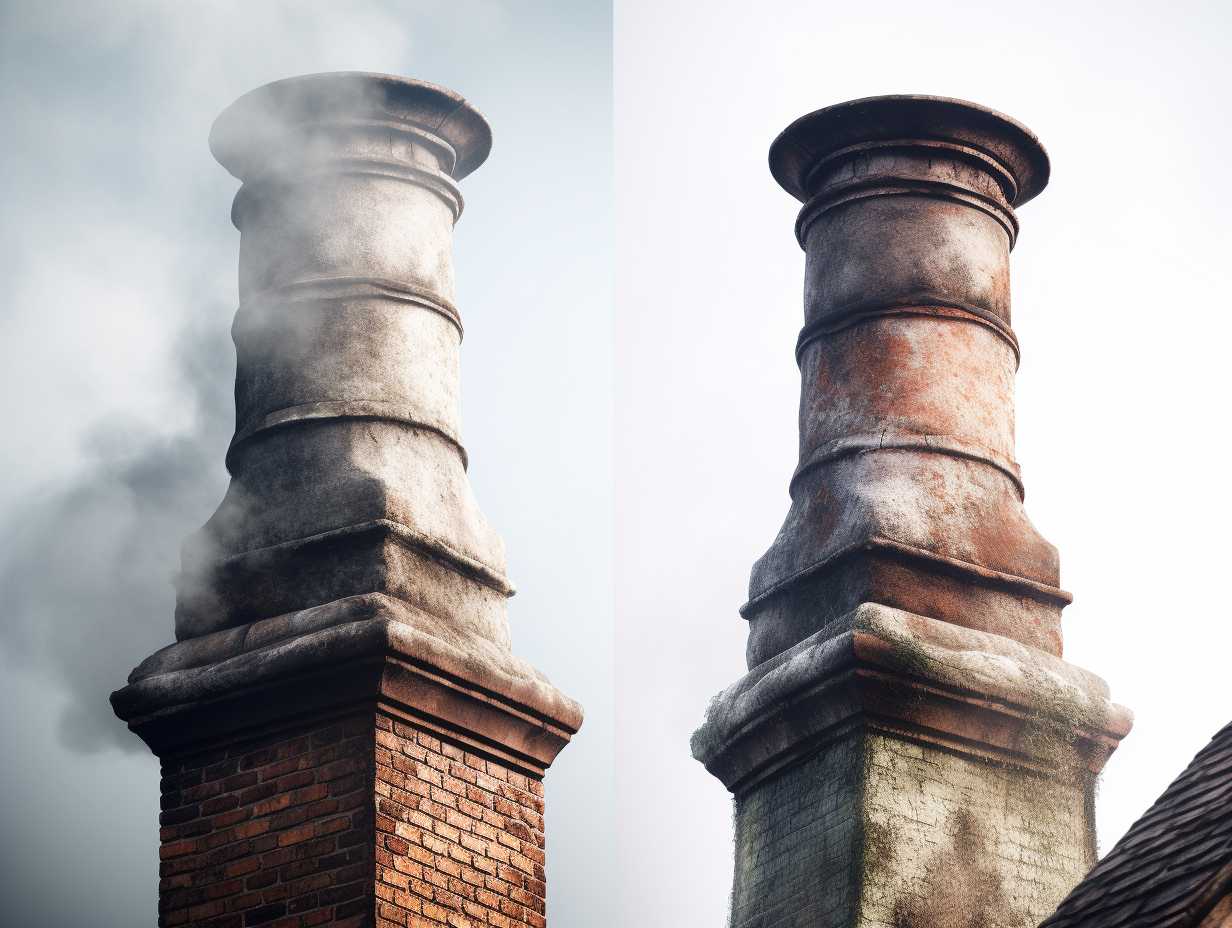
It’s crucial to know how often your chimney needs to be cleaned to ensure it functions properly and prevents potential hazards. The frequency of chimney cleanings depends on several factors, including the type of fuel you burn, the amount of use your fireplace or stove gets, and the condition of your chimney. As a rule of thumb, you should have your chimney inspected and cleaned at least once a year by either a professional chimney sweep or by using DIY chimney cleaning tools.
If you use your fireplace or stove regularly throughout the winter season, it’s recommended that you have it cleaned more frequently. A buildup of soot and creosote in your chimney can lead to dangerous hazards such as fires or carbon monoxide poisoning. While DIY cleaning may seem like an appealing option, it’s important to note that professional sweeps are trained to identify potential problems that may go unnoticed by untrained eyes. Ultimately, choosing between DIY vs professional cleaning will depend on personal preference and budget constraints. Regardless of which option you choose, maintaining flue health through regular cleanings is essential for keeping your home safe and warm during those chilly winter months.
Removing Creosote Buildup
Now that you know how often your chimney needs to be cleaned, let’s talk about removing creosote buildup. Creosote is a natural byproduct of burning wood and can build up in your chimney over time. It’s important to remove this buildup regularly to prevent blockages and potential chimney fires.
There are several creosote removal techniques available, including using a specialized brush or chemical treatments. A professional chimney sweep can help determine which method is best for your specific situation. In addition to removing existing creosote, it’s also important to take steps to prevent future buildup. This includes burning only dry and seasoned wood, avoiding unseasoned or treated lumber, and ensuring proper airflow in the fireplace or stove. By taking these precautions and regularly cleaning your chimney, you can ensure its continued health and safety.
Cleaning Chimney Caps and Dampers

To keep your chimney working properly, you should regularly clean the caps and dampers to ensure proper airflow. Cleaning chimney flues is important in preventing debris buildup, which can clog the passageway and lead to a decrease in efficiency. If you neglect cleaning these parts of your chimney, it can cause smoke backup into your home or even lead to a fire hazard.
One way to clean the caps and dampers is by using a stiff brush to remove any debris that has accumulated over time. You can also use a vacuum cleaner with an attachment designed for cleaning chimneys. It’s important to make sure that all parts are thoroughly cleaned so that they function as intended. By maintaining these parts of your chimney, you’ll be able to reduce the risk of fires and ensure that your fireplace works efficiently throughout the winter season.
Inspecting and Repairing Chimney Liners
Regularly inspecting and repairing your chimney liners is crucial for ensuring the safety and functionality of your fireplace. Chimney liner inspection should be done at least once a year to check for any cracks, holes, or damage in the liner. If left unchecked, these damages can lead to dangerous creosote buildup and potential gas leaks.
Repairing chimney liners should only be done by a professional as it requires specialized tools and expertise. When choosing a professional chimney sweep, make sure they are certified and experienced in repairing chimney liners. It’s also important to note that not all damaged liners need to be replaced; some can simply be repaired with specialized techniques such as relining or resurfacing. By regularly inspecting and repairing your chimney liners, you can ensure the safety of your home while enjoying the warmth of your fireplace.
- Inspect your chimney liner at least once a year.
- Look out for cracks, holes, or damage that could cause problems down the line.
- Choose a certified and experienced professional when getting repairs done.
- Remember that not all damage requires full replacement; some can simply be repaired with specialized techniques like relining or resurfacing.
Chimney Safety Tips

You don’t want to end up with a house full of smoke or worse, an accidental fire, so make sure you follow these simple safety measures when using your fireplace this winter season. First, it’s important to have your chimney inspected and cleaned by a professional at least once a year. A buildup of creosote and debris can cause blockages that prevent proper ventilation and increase the risk of fires.
In addition to regular chimney inspection and cleaning, be aware of carbon monoxide poisoning. This odorless gas can build up in your home if your fireplace isn’t properly ventilated or if there are cracks in the chimney. Symptoms of carbon monoxide poisoning include headaches, dizziness, nausea, and confusion. To prevent this dangerous scenario from happening in your home, install carbon monoxide detectors on every floor near sleeping areas.
Frequently Asked Questions
What is the best time of year to clean a chimney?
The best time to clean your chimney is before the start of winter. Regular chimney cleaning has benefits such as preventing fire hazards and ensuring proper ventilation. Hiring professional chimney cleaners is important for safety and efficiency.
Can I use household cleaning products to clean my chimney?
”Before attempting to clean your chimney with household cleaning products, it’s important to consider chimney safety. Harsh cleaning chemicals can damage the flue and create a fire hazard. Better safe than sorry!”
How do I know if my chimney needs repairs?
To know if your chimney needs repairs, you should schedule a chimney inspection by a professional. If you want to DIY repair, make sure you have the necessary tools and knowledge to do so safely.
Should I cover my chimney when not in use?
Did you know that 60% of homeowners cover their chimneys when not in use? While covers prevent debris buildup, they can also trap moisture and cause damage. Consider alternative solutions like regular maintenance routines to ensure flue health.
How do I prevent animals from entering my chimney?
To prevent animals from entering your chimney, you can install a chimney cap. Chimney sweep recommendations include annual inspections to ensure the cap is secure and free of debris.
Conclusion
In conclusion, you now know the importance of maintaining a healthy flue and how to keep your chimney clean. By regularly checking for signs of build-up, you can prevent dangerous blockages and ensure optimal performance. Whether you choose to DIY or hire a professional chimney sweep, it’s crucial to prioritize this maintenance task.
Remember that cleaning your chimney isn’t just about removing soot and debris. It also involves inspecting and repairing various components like liners, caps, and dampers. So stay safe by following our tips and keeping up with regular cleanings. Your family will thank you for providing them with a warm and cozy home all winter long!
Disclaimer: Some information is provided through AI. Users should always conduct their own research and consult with qualified professionals before making any decisions.Affiliate information declaration: We may earn revenue from the products referred on this page and participate in affiliate programs.
